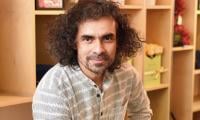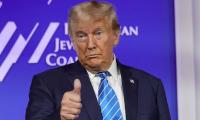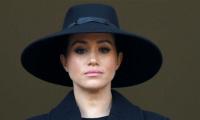The House of Sharif has been sorted out, and it seems the noose is now being tightened around the other grand political dynasty. The PPP, which hailed Nawaz Sharif’s disqualification and first conviction as a triumph of rule of law, described his second conviction as political vendetta. Verily, misery loves company and adversity teaches like nothing else.
Since the revival of democracy in 2002, politics in Pakistan has represented a triangular fight. The PPP and the Q and N factions of the PML were the three players during 2002-07. The Q faction was the ‘king’s party’, comprising largely PML-N dissidents. As a rule, the king’s party holds as long as royal patronage is available. Once that umbrella is pulled off and such parties are left to fend for themselves, they tend to fall apart. In the last couple of years of his rule, an increasingly unpopular General Pervez Musharraf had made up his mind to throw the PML-Q on the scrapheap and curry favour with the PPP, which ushered in the promulgation of the infamous National Reconciliation Ordinance (NRO). Having been left on its tod, the PML-Q took a pounding in the 2008 elections. The PPP formed government at the centre, while the PML-N took Punjab.
For a moment it appeared that breaking the political duopoly was a tall order and that the country was returning to the bi-party system that characterised politics during the 1990s. But that turned out to be an error of judgment. The PTI, which until then had been a political non-entity shunned by the movers and shakers, suddenly began to draw political heavyweights one after the other. From being the head of virtually a one-man party, Imran Khan became one of the most sought after political leaders. The political duopoly was showing signs of giving place to an oligopoly.
An industry characterised by a duopoly offers a narrow range of choices to customers, who have to go for one of the suppliers. If it isn’t Boeing, it must be Airbus; if it isn’t Visa, it has to be MasterCard; if it isn’t Pepsi Cola, it must be Coca-Cola. By the same token, a duopolistic political market leaves stakeholders with a limited choice. If it isn’t one party, it must be the other.
Hence, during the 1990s, in a game of musical chairs, the PPP and the PML-N took turns in the exercise of power. In 1990, the PPP government was sacked only to bring the PML-N in power. In 1993, the PML-N government was shown the door only to induct the PPP in power – and so on. In the singular context of Pakistani politics, the arbiters of last resort couldn’t afford to throw overboard both the parties at the same time. They had to put their money on one of them. Another implication of the duopolistic political structure was that the PPP and the PML-N would remain at daggers drawn. A pact like the Charter of Democracy (CoD) could not see the light of day. Such were the rules of the game, and they were obvious to all.
The entry of a third player in the political market upends the simple duopolistic model. Now the stakeholders have more strings to their bow. Instead of being constrained to choose ‘A’ or ‘B,’ they can turn their back on both and fix on ‘C.’ They can also afford to direct their guns towards both A and B at the same time without having to upset the existing applecart.
So, the rise of the PTI meant that in the event that the PML-N fell out of favour with the arbiters, the PPP may not be the principal beneficiary. With Nawaz Sharif known for cutting his own throat, the top PPP leadership riddled with graft allegations and Imran Khan enjoying the image of Mr Clean, that possibility was highly probable.
Hence, during the five-year tenure of the PML-N, the real opposition to the ruling party came from the PTI. It was the PTI that demanded Nawaz Sharif to step down as early as 2014 over alleged rigging in the 2013 elections. During the prolonged dharnas, which at one stage had appeared only a whisker away from dislodging the government, the PPP put its full weight behind the PML-N, and earned the sobriquet ‘a friendly opposition,’ on the ground that it was supporting democracy and not the ruling party.
After the PTI’s agitations failed to hit the bull’s eye, the Panama Leaks provided another opportunity to the party to have a go at the government. It was Imran Khan who took the corruption scam to the apex court, which culminated in disqualification of Nawaz Sharif and set off the reversal of fortune for the powerful political dynasty. All along, the PPP sat on the fence on the issue. However, once it was clear that the three-time prime minister was in hot waters, the party switched gears and began gunning for the ruling family. When Sharif was finally disqualified by the Supreme Court, the PPP not only praised the verdict but also contemptuously dismissed any conspiracy theory expounded by the ousted prime minister as an old wives’ tale.
The PPP grasped at straws to make itself palatable in the emerging arrangement. The party was instrumental in the dramatic in-house change in Balochistan. It rubbed shoulders with the PTI in the Senate elections to block the PML-N nominee for chairperson. But the cards had already been stacked in favour of the PTI, which won the 2018 elections a few months later.
The PPP finished a distant third behind the PML-N. However, all wasn’t lost for the party. It retained its absolute majority in the Sindh Assembly and beefed up its tally in the National Assembly. Then there was the possibility that in a hung parliament the PPP at some stage may get the opportunity to play the much cherished role of the balancer, for which Zardari is only in his own league. On a rather flimsy ground, the party backed out of its commitment to support the PML-N in the PM’s election and later fielded its own candidate in the presidential poll.
All these developments were taking place in the backdrop of a cat-and-mouse game, in which the PPP was fated to play the unenviable role. If corruption could prove the Achilles’ heel for the Sharifs, it may well put the Zardaris through the hoop. It was only a matter of time when the modus operandi that unseated the PML-N government would pull the rug from under the top PPP leadership as well. Although the PPP has shrugged off a damning JIT report in the fake accounts case, it may prove to be a camel’s nose for the party. That would hardly have come to pass if we were living in the 1990s.
Being now in the same boat as the PML-N, the PPP may join hands with the former to ward off the PTI’s attempts to turn the current oligopolistic arrangement into a monopoly. The last time that happened was during the Musharraf era when the exiled leadership of the two parties signed the CoD. Already there are indications that they may make a common cause in removing the Senate chairman. For sure, the combined PPP-PML-N strength can give a tough time to the PTI.
Be that as it may, a possible PPP-PML-N alliance may creak under the strain of the prisoners’ dilemma: at all events, cooperation is in their mutual interest but each party has an incentive to cheat knowing it off pat that if it abides by the commitment while the other defects, the defecting party will be let off the hook leaving the cooperating party worse off.
The writer is an Islamabad-based columnist.
Email: hussainhzaidi@gmail.com
Twitter: @hussainhzaidi
A health worker administers polio vaccine drops to a child during a door-to-door polio vaccination campaign in Lahore,...
Armed militants of the banned Tehreek-e-Taliban Pakistan pose for a photograph in Orakzai Agency. —...
An aeroplane of the national flag carrier of Pakistan is seen in this file photo. — AFPWhile Pakistan considers...
Representational image of a graph depicting various variables. — APP/FileInitiated by the centre and fiercely...
In this picture taken on April 16, 2023, people throng a market area during shopping in Lahore. — AFPOne of the...
Honour crimes also target men. In Sikandar Ali Lashari vs The State, SHC upheld conviction passed by ATC for honour...







